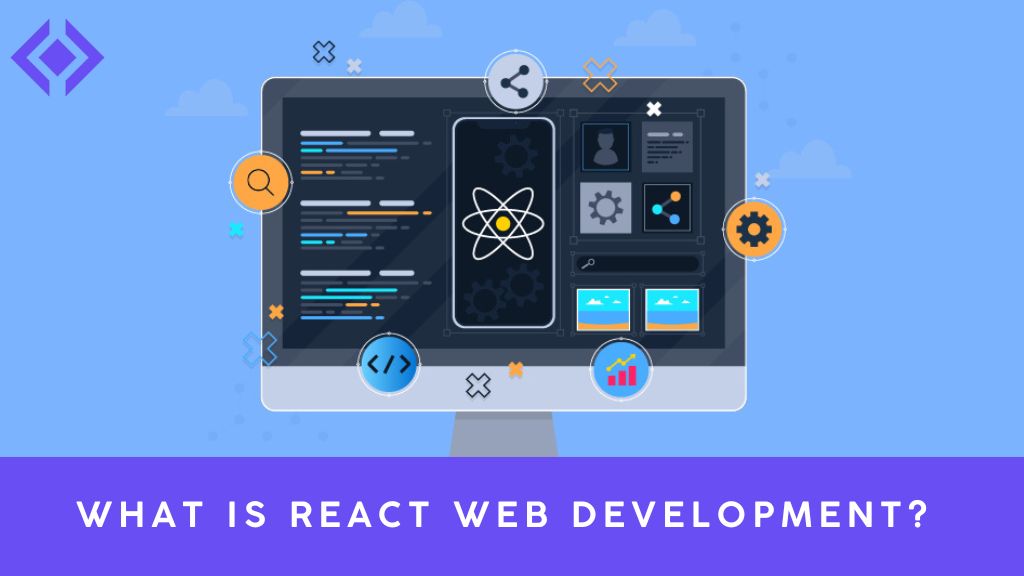Subtotal $0.00
React has revolutionized the way web applications are built, making development faster, smoother, and more scalable. But what is React web development? In this guide, we’ll explore the core concepts, benefits, and practical applications of React, ensuring you understand why it’s one of the most popular technologies in the web development world today.
What is React Web Development?
React is a JavaScript library created by Facebook for building user interfaces, particularly single-page applications (SPAs). It allows developers to create reusable UI components, making it easier to build dynamic and interactive web applications.
Released in 2013, React has grown rapidly in popularity due to its performance, simplicity, and flexibility. Developers often pair React with other tools like Redux, Next.js, and React Router to create robust and scalable applications.
Key Features of React
1. Component-Based Architecture
React applications are built using reusable components. Each component encapsulates its logic, rendering, and state, which promotes modularity and code reuse.
2. Virtual DOM
React uses a Virtual DOM to optimize updates and rendering. Instead of updating the real DOM directly, React updates the Virtual DOM first and efficiently calculates the minimal changes needed to update the actual DOM.
3. Declarative UI
React allows developers to describe how the UI should look based on the current application state. This makes code more predictable and easier to debug.
4. JSX Syntax
React uses JSX, a syntax extension of JavaScript, to write HTML-like code directly within JavaScript. This improves code readability and developer productivity.
5. One-Way Data Binding
React follows a unidirectional data flow, which means data flows from parent to child components. This ensures better control and debugging of applications.
Why Choose React for Web Development?
1. Ease of Learning
React is beginner-friendly, especially for developers with a basic understanding of JavaScript. Its component-based approach and clear documentation make it accessible.
2. High Performance
Thanks to its Virtual DOM and efficient rendering algorithms, React applications are fast and responsive, even with complex UIs.
3. Rich Ecosystem
React’s ecosystem includes numerous libraries and tools, such as Redux for state management, Material-UI for styling, and React Router for navigation.
4. Strong Community Support
React has a massive developer community, which means abundant resources, tutorials, and forums for troubleshooting and learning.
5. Cross-Platform Development
React’s principles extend beyond web development. React Native, for example, allows developers to build mobile applications using React’s core concepts.
How React Works in Web Development
1. Setting Up a React Project
React projects often start with a tool like Create React App, which provides a boilerplate to set up the environment quickly. Alternatively, developers can use frameworks like Next.js for server-side rendering and advanced features.
2. Building Components
Developers create React components that represent parts of the user interface. For example:
function Greeting() {
return <h1>Hello, World!</h1>;
}
Components can be as simple as the example above or more complex, managing their own state and logic.
3. Managing State and Props
React uses state and props to manage data within and between components. State represents dynamic data, while props are used to pass data from one component to another.
4. Handling Events
React makes event handling straightforward with attributes like onClick or onChange. Example:
function Button() {
function handleClick() {
alert('Button clicked!');
}
return <button onClick={handleClick}>Click Me</button>;
}
5. Routing
For navigation, developers use libraries like React Router to implement routes and manage application paths.
6. Styling Components
React supports various styling options, from CSS-in-JS libraries like Styled Components to traditional CSS and pre-processors like SASS.
Practical Applications of React
1. Single-Page Applications (SPAs)
React is perfect for SPAs, where content dynamically updates without reloading the page. Popular examples include Gmail and Facebook.
2. E-Commerce Platforms
React’s scalability and performance make it ideal for building e-commerce websites, where fast loading and dynamic content are critical.
3. Dashboards and Data Visualization
React works well for creating interactive dashboards, integrating with libraries like D3.js or Chart.js for data visualization.
4. Social Media Platforms
React’s component-based architecture and reusability are a natural fit for building social media features like feeds, comments, and notifications.
5. Progressive Web Apps (PWAs)
React, combined with service workers, can be used to build PWAs that offer offline capabilities and enhanced performance.
Best Practices for React Web Development
1. Keep Components Small and Focused
Each component should have a single responsibility. This makes the application easier to understand, test, and maintain.
2. Use Functional Components
With the introduction of React Hooks, functional components are now the preferred way to build React applications.
3. Optimize Performance
Leverage tools like React.memo, lazy loading, and code splitting to improve application performance.
4. Write Clean and Readable Code
Adopt consistent coding practices, use meaningful names, and follow best practices for readability and maintainability.
5. Test Your Code
Use testing libraries like Jest and React Testing Library to ensure your components work as expected.
Conclusion: Why Learn React Web Development?
React is more than just a library; it’s a powerful tool that has reshaped web development. With its rich ecosystem, active community, and cross-platform capabilities, React is a must-learn for any aspiring web developer. Whether you’re building a personal project or an enterprise application, React offers the tools and flexibility to bring your ideas to life.
Call-to-Action:
Ready to dive into React? Start by creating your first component and exploring resources like the React documentation and online tutorials. Share your progress or challenges in the comments below—let’s learn together!

